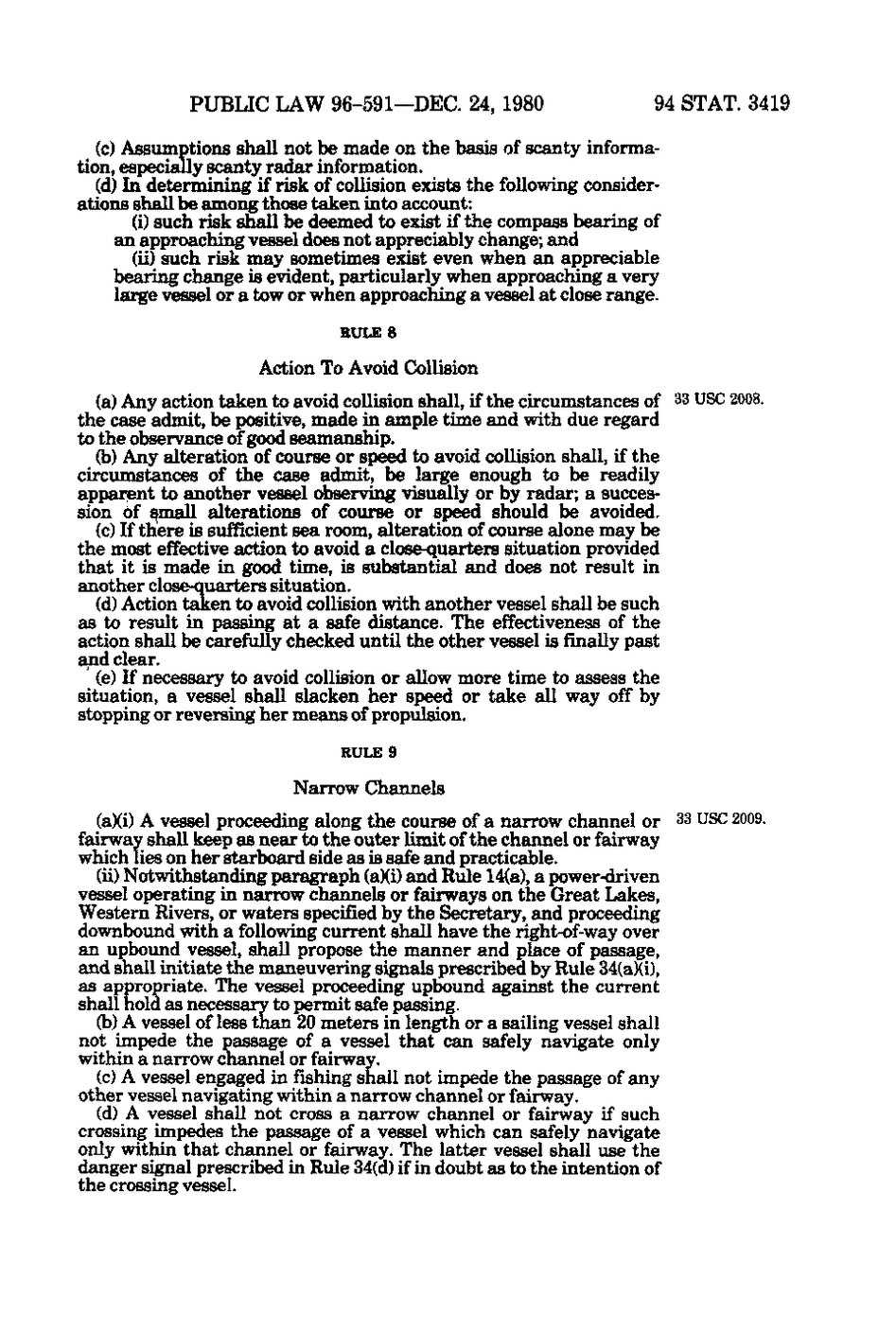PUBLIC LAW 96-591—DEC. 24, 1980
94 STAT. 3419
(c) Assumptions shall not be made on the basis of scanty information, especially scanty radar information. (d) In determining if risk of collision exists the following considerations shall be among those taken into account: (i) such risk shall be deemed to exist if the compass bearing of an approaching vessel does not appreciably change; and (ii) such risk may sometimes exist even when an appreciable bearing change is evident, particularly when approaching a very large vessel or a tow or when approaching a vessel at close range. RULE 8
Action To Avoid Collision (a) Any action taken to avoid collision shall, if the circumstances of 33 USC 2008. the case admit, be positive, made in ample time and with due regard to the observance of good seamanship. (b) Any alteration of course or speed to avoid collision shall, if the circumstances of the case admit, be large enough to be readily apparent to another vessel observing visually or by radar; a succession of Ismail alterations of course or speed should be avoided, (c) If there is sufficient sea room, alteration of course alone may be the most effective action to avoid a close-quarters situation provided that it is made in good time, is substantial and does not result in another close-quarters situation. (d) Action taken to avoid collision with another vessel shall be such as to result in passing at a safe distance. The effectiveness of the action shall be carefully checked until the other vessel is finally past and clear. (e) If necessary to avoid collision or allow more time to assess the situation, a vessel shall slacken her speed or take all way off by stopping or reversing her means of propulsion. RULE 9
Narrow Channels (a)(i) A vessel proceeding along the course of a narrow channel or 33 USC 2009. fairway shall keep as near to the outer limit of the channel or fairway which lies on her starboard side as is safe and practicable. (ii) Notwithstanding paragraph (a)(i) and Rule 14(a), a power-driven vessel operating in narrow channels or fairways on the Great Lakes, Western Rivers, or waters specified by the Secretary, and proceeding downbound with a following current shall have the right-of-way over an upbound vessel, shall propose the manner and place of passage, and shall initiate the maneuvering signals prescribed by Rule 34(a)(i), as appropriate. The vessel proceeding upbound against the current shall hold as necessary to permit safe passing. (b) A vessel of less than 20 meters in length or a sailing vessel shall not impede the passage of a vessel that can safely navigate only within a narrow channel or fairway. (c) A vessel engaged in fishing shall not impede the passage of any other vessel navigating within a narrow channel or fairway. (d) A vessel shall not cross a narrow channel or fairway if such crossing impedes the passage of a vessel which can safely navigate only within that channel or fairway. The latter vessel shall use the danger signal prescribed in Rule 34(d) if in doubt as to the intention of the crossing vessel.
�
